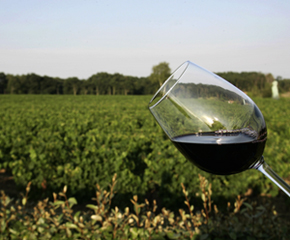In Bordeaux vineyards, the pickers are bringing in the very last of the harvest which is set to yield the first great vintage of this century.
“Nature has been extremely generous, it is sumptuous. It’s difficult to find comparisons, you have to go back to the climatology of the 40s to find, perhaps, comparable conditions,” said Denis Dubourdieu, director of the Bordeaux Institute of Vine and Wine Sciences (ISVV), and renowned winemaker.
With the exception of hail storms that bombarded an estimated 15 percent of crops in the region last May, the growing season has been remarkably favourable to producing aromatic wines with deep colour, exactly the type of wines that consumers demand.
With crop yields at a healthy 50-55 hectolitres per hectare, according to Laurent Gapenne, who heads the Federation of Grands Vins of Bordeaux, the crop is not only excellent but bountiful.
Seven or eight great vintages a century
This could prove a boon to a wine industry struggling in the global economic climate and facing fierce competition from the New World.
“There are only seven or eight vintages of this type per century,” said Bordeaux wine merchant and professional taster Jean-Christophe Esteve.
Esteve said the quality of the grapes was due to an exceptionally sunny dry September, the first of its sort since 1949.
Drought fears
In fact it was so dry there were fears drought would threaten the crop.
Drought threatened the vines’ ability to ripen the grapes and the precious tannins that allow Bordeaux’s wines to age. And for two weeks, the vines virtually stopped ripening.
“Then the rain came, like the answer to a prayer, exactly at the right time, and the vines continued maturing,” said Pierre Lurton, General Manager of Chateau Cheval Blanc in Saint Emilion.
“Such a fall after such a summer, it’s rather extraordinary, one can’t dream of anything better,” said Dubourdieu.
The result: the grapes have the sugar content, colour and fruitiness in the same proportion as great vintages, said Dubourdieu.
In the cellars of Bordeaux that prediction seems to be holding true.
At Cheval Blanc, Lurton opened the spigot from one of the stainless-steel vats holding the nascent wine that will be coveted by collectors around the world and watched the deep purple juice, barely fermented, fill a wine glass.
“This year, the tannins are like cashmere,” he said. “But the wine needs gentle extraction, to keep it fresh and elegant,” he cautioned.

